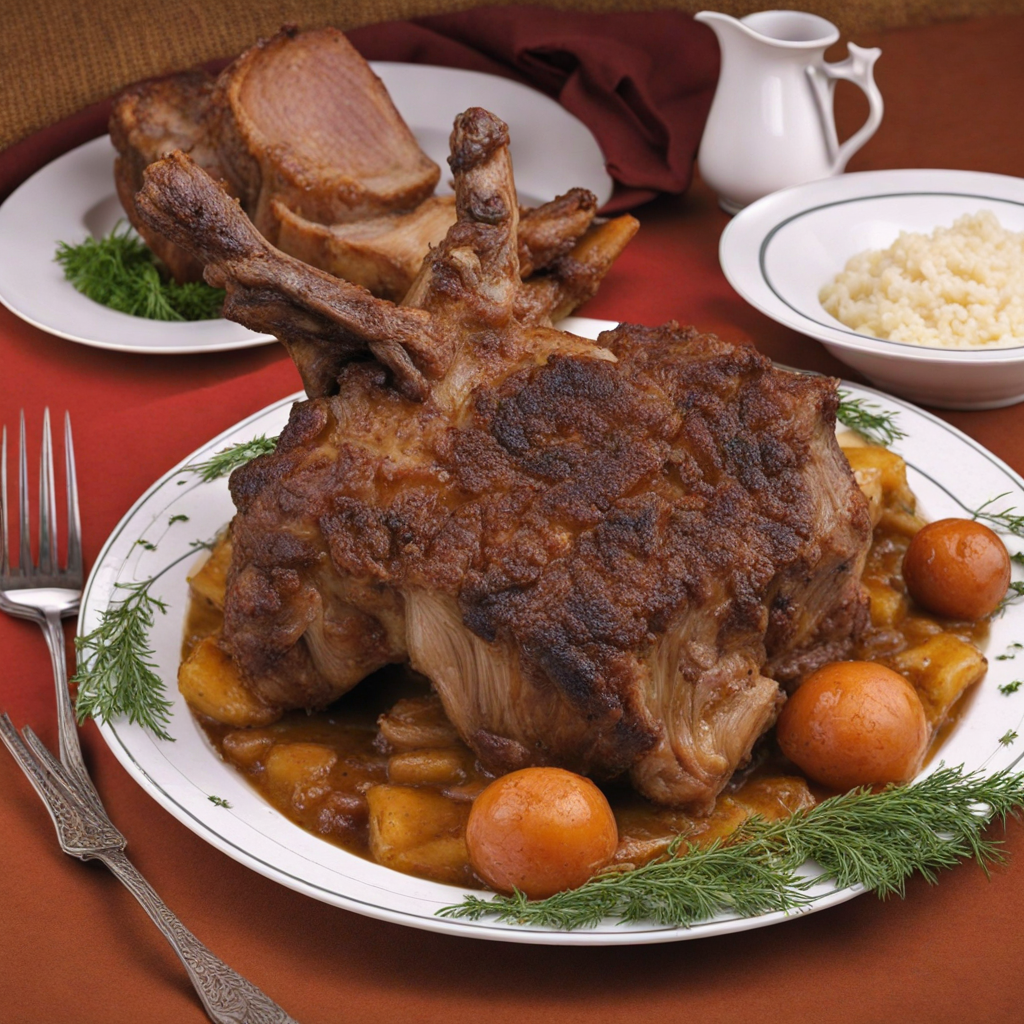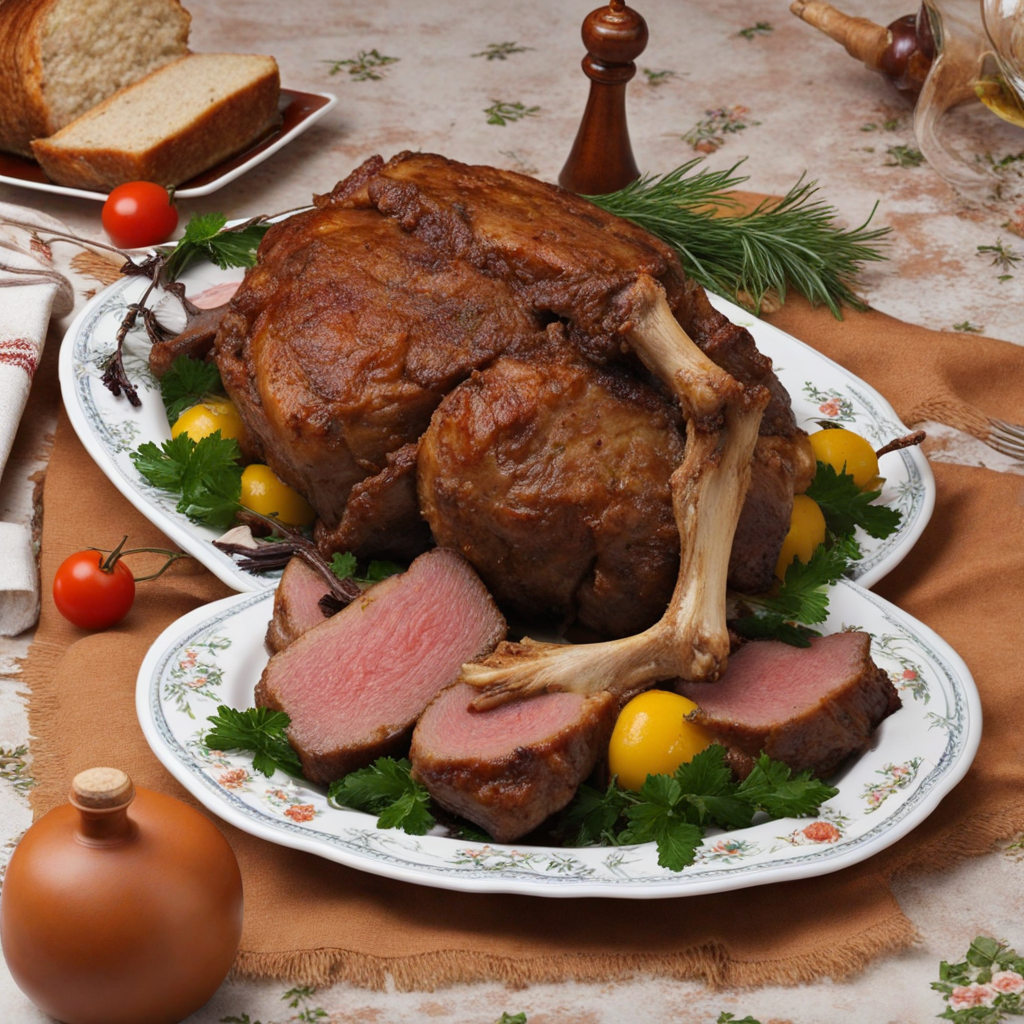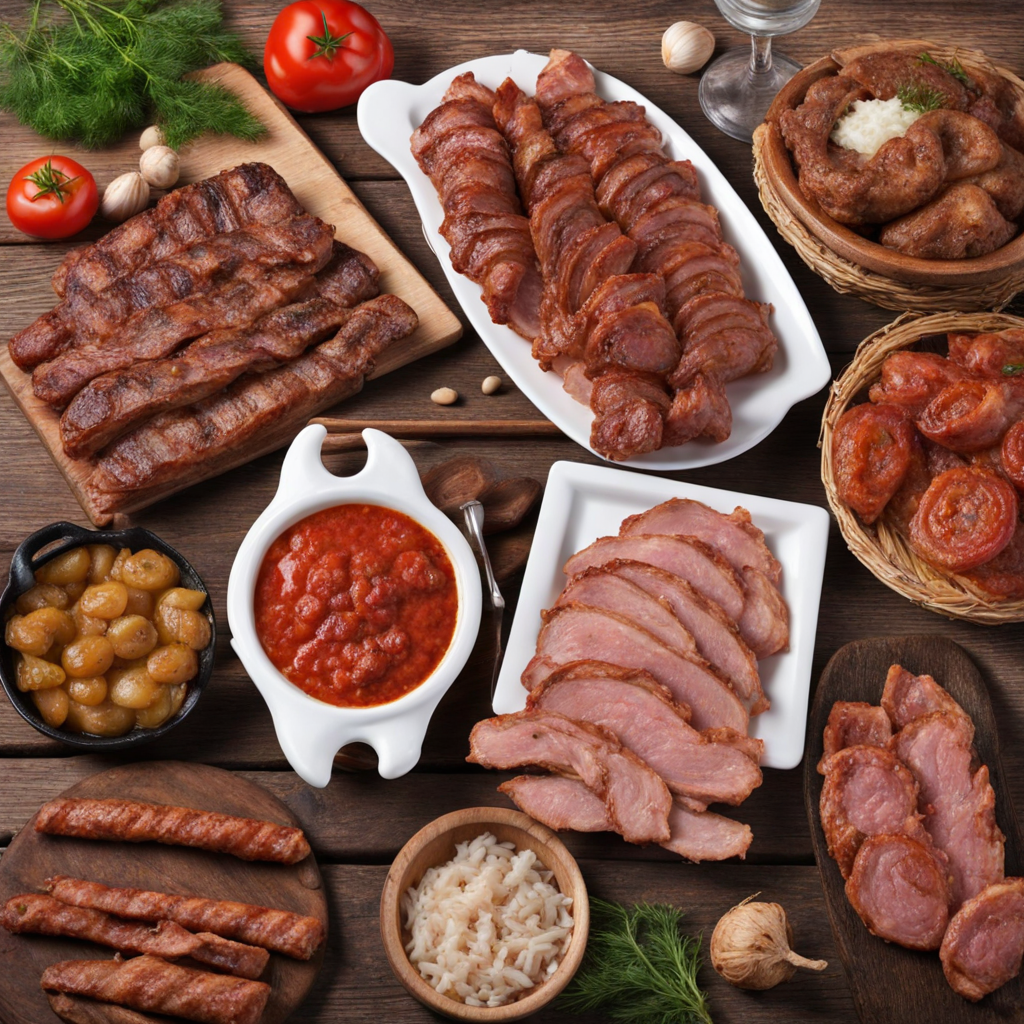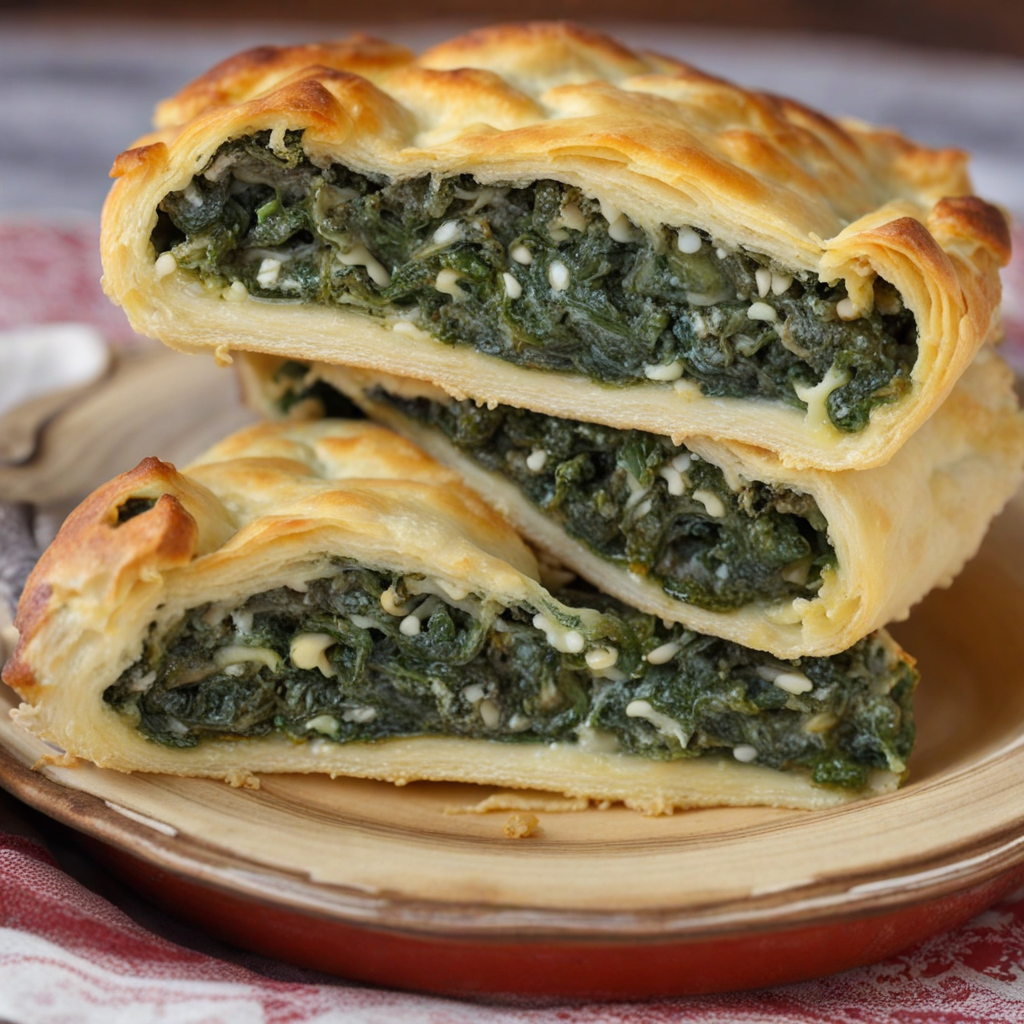Jagnjetina
Jagnjetina, or lamb, is a cherished dish in Serbian cuisine that captures the heart of hearty Balkan flavors. Known for its tender texture and rich taste, this dish is often prepared using young lamb, which is renowned for its succulent meat and delicate flavor. The preparation typically involves marinating the lamb with aromatic herbs such as rosemary, thyme, and garlic, infusing it with a delightful fragrance that enhances the natural qualities of the meat. The lamb is then slow-roasted, allowing the flavors to meld and the meat to become irresistibly tender, making it a centerpiece of festive gatherings and family meals alike. When served, Jagnjetina is often accompanied by traditional sides that elevate the overall experience. Common pairings include roasted potatoes, seasonal vegetables, and a dollop of creamy yogurt or ajvar, a vibrant red pepper spread that adds a burst of flavor. The combination of the savory lamb with the freshness of the sides creates a balanced dish that tantalizes the taste buds. Each bite offers a harmony of flavors, with the juicy meat complemented by the earthy notes of herbs and the sweetness of roasted vegetables. Beyond its delicious taste, Jagnjetina is steeped in cultural significance, often associated with celebrations and special occasions in Serbian households. The preparation and sharing of this dish bring families together, embodying the warmth and hospitality of Serbian traditions. For those seeking to explore new culinary horizons, savoring Jagnjetina is not just about the food itself; it's about experiencing a piece of Serbia's rich gastronomic heritage, making it a must-try for any adventurous foodie.
How It Became This Dish
The History of Јагњетина: A Culinary Symbol of Serbia #### Origins and Early History Јагњетина, or lamb, holds a significant place in Serbian cuisine and culture. The origins of lamb consumption in this region can be traced back centuries, deeply intertwined with pastoral traditions. The ancient Slavs, who migrated into the Balkan Peninsula, brought with them a pastoral lifestyle that revolved around animal husbandry. Sheep were among the first domesticated animals, providing not only meat but also wool and milk, essential for survival in the harsh climates of the region. The geographical landscape of Serbia, characterized by rolling hills and fertile plains, has been conducive to sheep farming. This aspect of the environment allowed communities to raise flocks, which became integral to their livelihoods. Over time, lamb, particularly young lamb, became a staple in the diet of the Serbian people, often featured in various traditional dishes. #### Cultural Significance In Serbian culture, lamb is more than just food; it symbolizes hospitality, celebration, and connection to heritage. The culinary practice of roasting lamb, especially during significant religious holidays and family gatherings, reflects the communal spirit of the Serbian people. One of the most notable occasions for lamb consumption is during Easter, a time when families gather to commemorate the resurrection of Christ. The roasted lamb, often prepared with herbs and served with traditional sides, represents sacrifice and renewal, tying it to the spiritual aspects of the holiday. Moreover, lamb dishes are often featured at weddings, christenings, and other important life events, reinforcing its status as a food of celebration. The preparation of lamb, particularly in traditional ways, has been passed down through generations, serving as a cultural touchstone that connects contemporary Serbians with their ancestors. #### Preparation and Culinary Techniques The methods of preparing lamb in Serbia have also evolved over time, influenced by regional ingredients and culinary practices. One of the most beloved ways to prepare lamb is by slow-roasting it over an open fire, a technique that highlights the meat's natural flavors. The lamb is often marinated with a mixture of local herbs such as rosemary, thyme, and garlic, enhancing its taste while ensuring tenderness. Another traditional method involves cooking lamb in a pot with vegetables, potatoes, and a variety of spices, creating a hearty dish that is perfect for family gatherings. In some regions, lamb is prepared as a stew, known as "jagnjetina s povrćem," where it simmers slowly, allowing the flavors to meld beautifully. In addition to these methods, the Serbian tradition of "spit-roasting" lamb – where the entire animal is cooked on a spit over an open flame – is a popular practice during festive occasions. This technique not only enhances the flavor through even cooking but also adds a sense of spectacle to the event, drawing attention and admiration from guests. #### Regional Variations Serbia's diverse geography has given rise to regional variations in lamb dishes. In the mountainous areas, for example, the harsh climate has led to the development of hearty stews that utilize local root vegetables, while in the plains, lighter preparations dominate. The Vojvodina region, known for its agricultural bounty, often showcases lamb dishes accompanied by fresh produce and dairy products, reflecting the local culinary identity. In contrast, the southern regions of Serbia, influenced by Mediterranean flavors, may incorporate olive oil, citrus, and a variety of spices into their lamb preparations. This melding of flavors illustrates the broader historical interactions between the peoples of the Balkans and their neighbors, contributing to a rich tapestry of culinary traditions. #### The Influence of Historical Events The history of lamb consumption in Serbia has not been without its challenges. The turbulent history of the region, marked by invasions, wars, and political upheaval, has affected agricultural practices and dietary habits. The Ottoman Empire's influence in the 15th century introduced new culinary techniques and spices, further diversifying the ways lamb was cooked and served. The melding of Ottoman and Serbian cuisines left an indelible mark on the preparation of lamb dishes, leading to a fusion of flavors that persists in contemporary recipes. Post-World War II, as Serbia underwent significant social and economic changes, the way people engaged with food also transformed. Urbanization led to a decline in traditional farming practices, but the enduring love for lamb and its cultural significance led to a revival of traditional dishes in urban settings. Restaurants began to embrace these heritage recipes, ensuring that the culinary practices surrounding lamb would not be lost to modernization. #### Modern-Day Lamb Dishes Today, lamb continues to be a cherished component of Serbian cuisine. Contemporary chefs often seek to honor traditional methods while incorporating modern culinary techniques and global influences. Lamb is featured on many restaurant menus, with dishes that celebrate its rich flavors while introducing new ingredients and presentations. Moreover, the rise of agritourism and food festivals in Serbia has reignited interest in traditional lamb dishes. Events celebrating local culinary heritage often showcase lamb as a centerpiece, attracting both locals and tourists eager to experience authentic Serbian flavors. This revival not only boosts local economies but also fosters a renewed appreciation for the cultural significance of lamb in Serbian society. #### Conclusion Јагњетина is not just a dish; it is a symbol of Serbian identity, heritage, and communal bonds. Its rich history reflects the evolution of Serbian culture, marked by resilience, adaptation, and celebration. The preparation and enjoyment of lamb transcend mere sustenance, embodying the spirit of togetherness and the importance of tradition in an ever-changing world. As Serbia continues to navigate modernity, the legacy of lamb remains a comforting constant, a delicious reminder of the past and a bridge to the future.
You may like
Discover local flavors from Serbia







